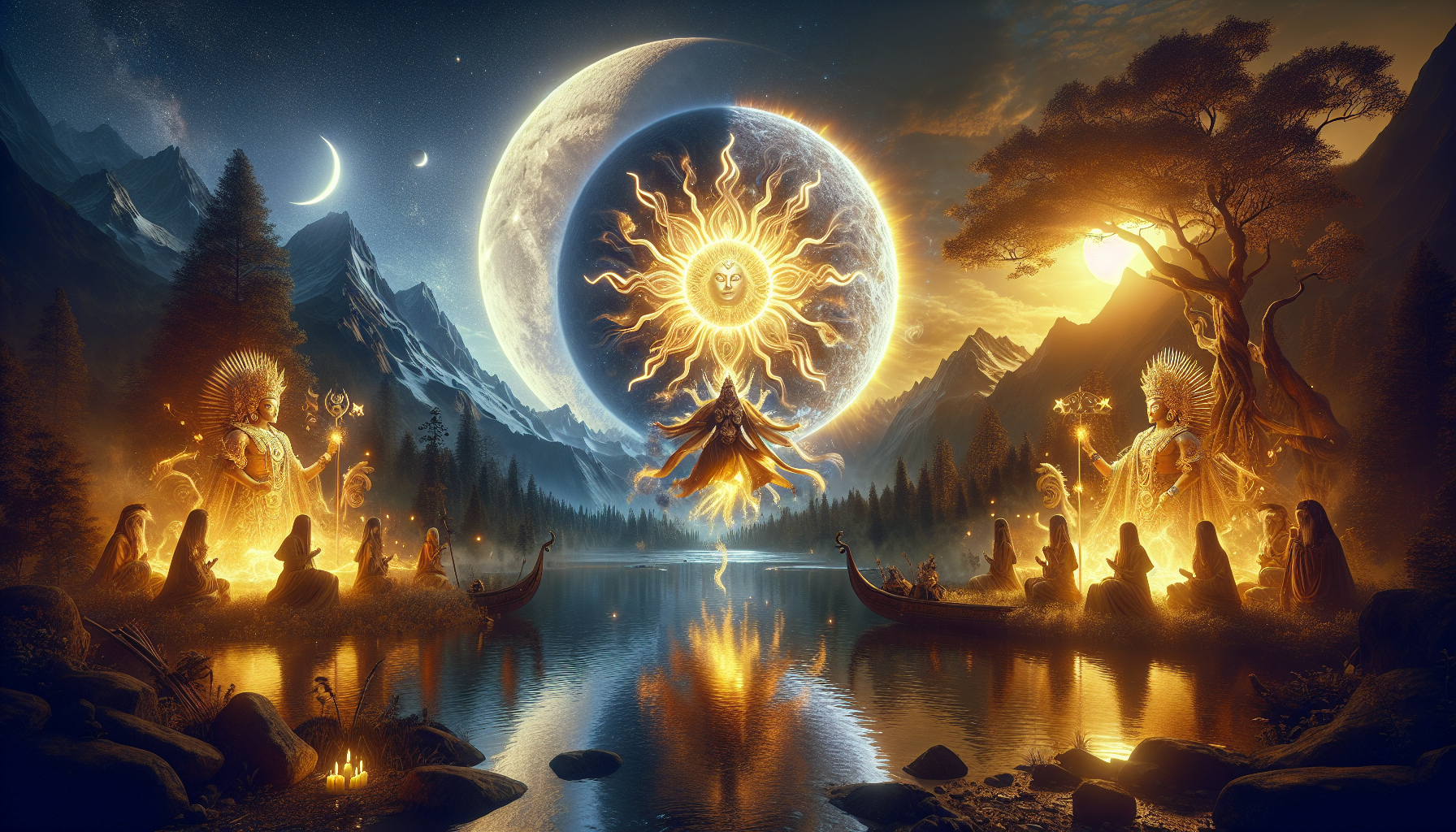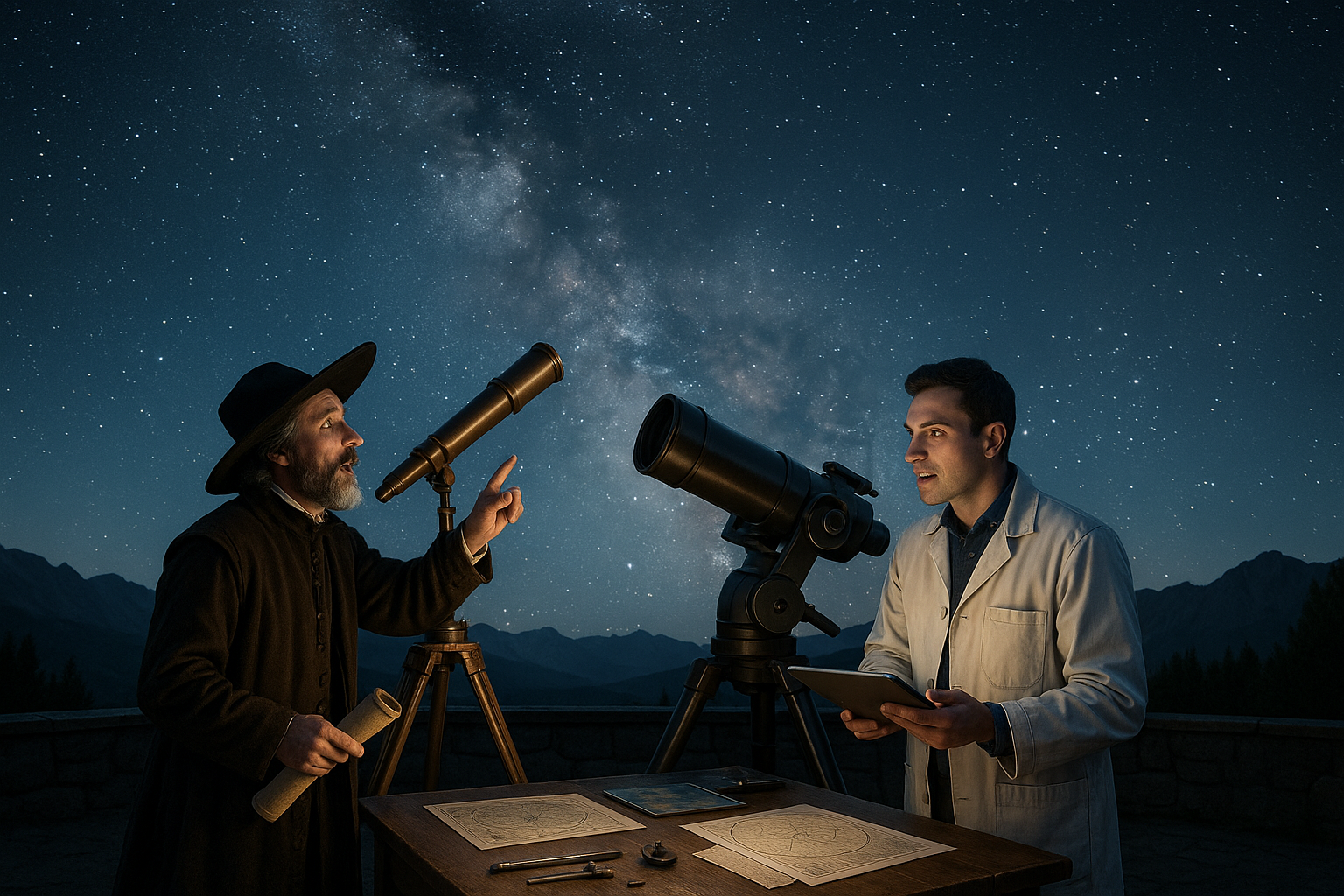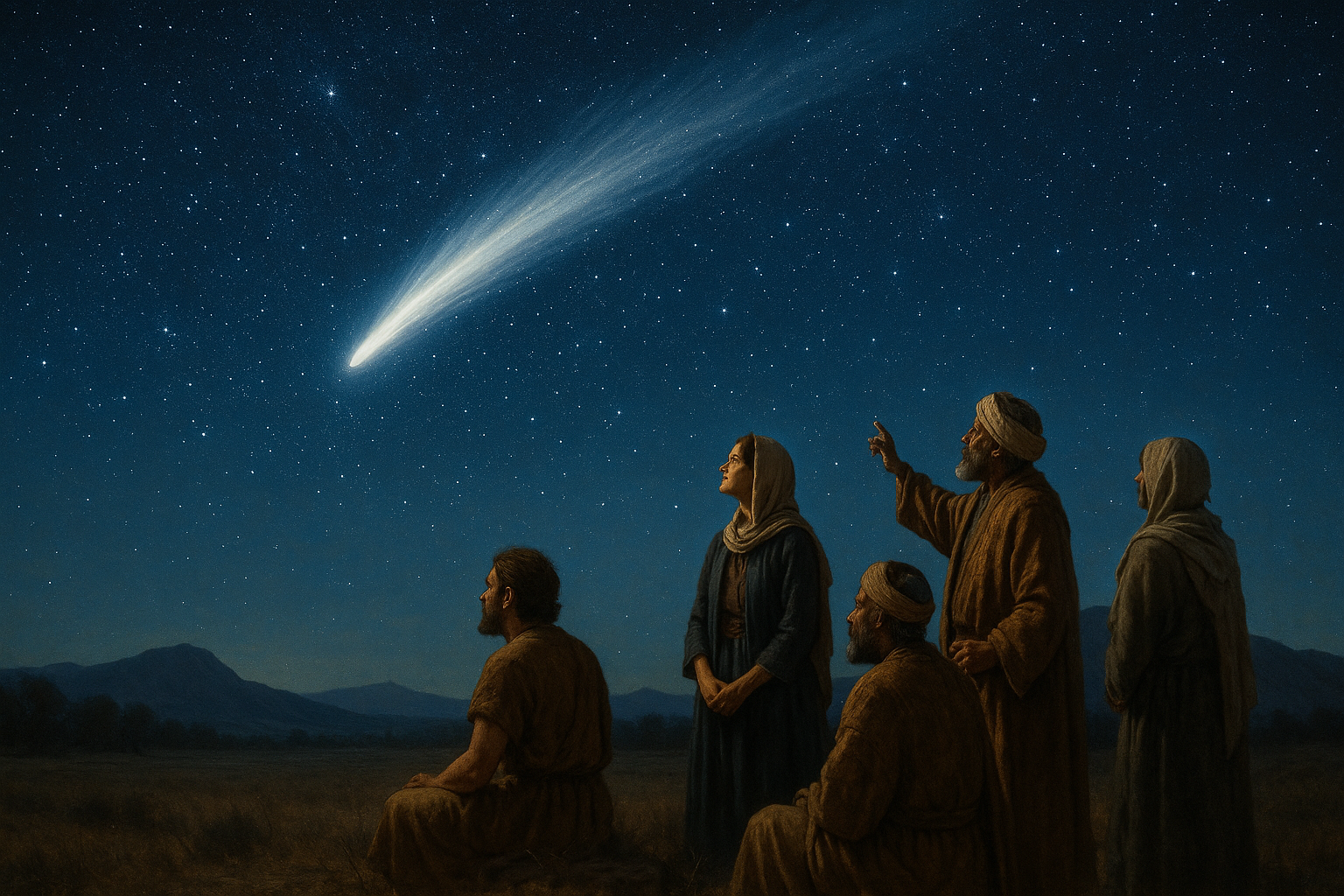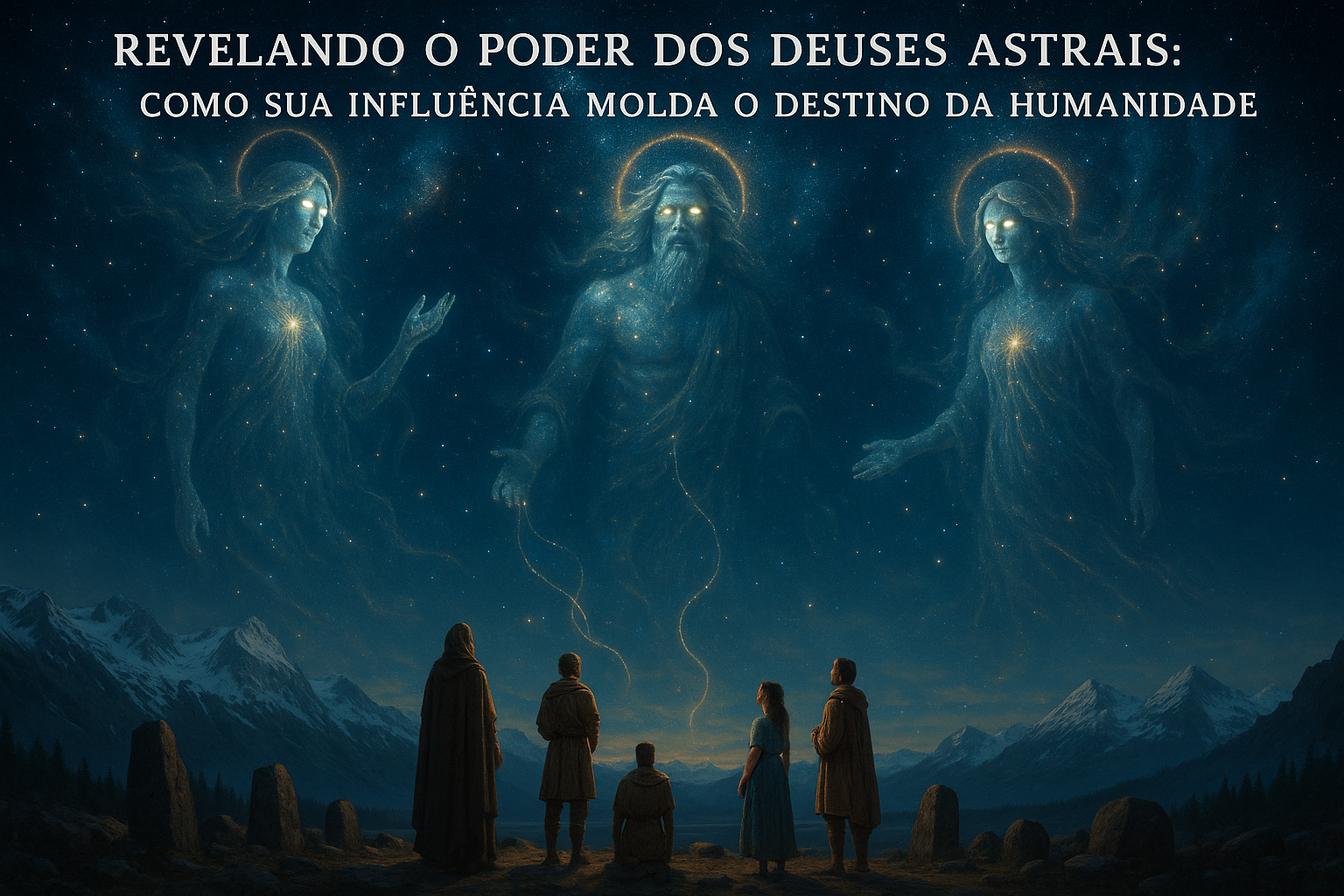In the vast tapestry of human history, where myths and legends intertwine with the fabric of daily life, the celestial bodies of the sun and moon have long held a significant place. As we peer back through the annals of time, we discover that these luminous orbs were not merely passive elements of the night and day sky but powerful deities that shaped cultures, guided civilizations, and influenced spiritual beliefs across the globe. In this exploration, we delve into the radiant domain of sun and moon deities, tracing their origins, roles, and the indelible impact they had on ancient societies.
Throughout history, the sun and moon have been revered as potent symbols of power, life, and mystery. The sun, with its unyielding light and life-giving warmth, was often seen as the ultimate source of energy and vitality, a deity that embodied strength and authority. From the mighty Ra of ancient Egypt to the awe-inspiring Inti of the Inca civilization, sun gods were worshipped and celebrated in grandiose ceremonies, their temples standing as testaments to their significance. On the other hand, the moon, with its ethereal glow and ever-changing phases, captured the human imagination with its enigmatic presence. Moon deities, like the graceful Tsukuyomi of Japan and the nurturing Selene of Greece, were seen as guardians of the night, symbolizing intuition, dreams, and the cyclical nature of existence. 🌞🌜
As we journey through this narrative, we will uncover how these celestial deities were not only central to religious practices but also played pivotal roles in shaping cultural identities and worldviews. We will explore the rituals and myths that surrounded these deities, offering a glimpse into the values and beliefs of the people who venerated them. From solar festivals that marked the changing of seasons to lunar calendars that guided agricultural practices, the influence of these deities permeated all aspects of life. By examining archaeological findings and ancient texts, we can piece together the intricate ways in which these sun and moon gods were interwoven with the daily lives and spiritual practices of ancient peoples.
Moreover, the symbolism associated with sun and moon deities transcended the boundaries of individual cultures, creating a shared language that spoke to the universal human experience. Their stories of creation, destruction, love, and renewal offer timeless lessons and reflections on the human condition. As we delve into the myths and legends of these deities, we find common threads that highlight the interconnectedness of human belief systems and the shared awe with which we regard the cosmos. Join us on this illuminating journey as we shine a light on the enduring power of sun and moon deities in ancient cultures, and discover how their legacy continues to influence our world today. 🌞✨🌛
The Significance of Sun Deities in Ancient Cultures
The power and symbolism of sun deities have been a cornerstone in numerous ancient cultures, signifying life, growth, and enlightenment. The sun, as a natural phenomenon, has always been a source of fascination due to its life-giving properties. Its cyclical nature – rising in the east, setting in the west, and bringing warmth and light – became a symbol of constancy and renewal, which many civilizations deified into gods and goddesses.
In ancient Egypt, the sun god Ra was one of the most important deities. Often depicted with a falcon head crowned with a sun disk, Ra was believed to travel across the sky in his solar boat, battling the forces of chaos. His journey represented the cycle of life and the passage of time. Similarly, in ancient Greece, Helios, the personification of the sun, drove his chariot across the sky daily. His presence symbolized all-seeing knowledge and the dispelling of darkness.
Sun deities were not only revered for their illuminating qualities but also for their connection to power and authority. Kings and pharaohs often claimed descent from or favor with these deities to legitimize their rule. The sun’s association with clarity and truth made it a divine witness to oaths and covenants. This role as a supreme arbiter can be seen in cultures worldwide, from the Mayans, who revered Kinich Ahau, to the Hindus, who worship Surya.
Comparative Analysis of Sun Deities
| Culture | Deity | Representation | Symbolism |
|---|---|---|---|
| Egyptian | Ra | Falcon head, sun disk | Life, creation, power |
| Greek | Helios | Chariot of fire | Knowledge, omnipresence |
| Mayan | Kinich Ahau | Sun-faced, jaguar traits | Royalty, renewal |
| Hindu | Surya | Golden warrior, chariot | Health, prosperity |
For a deeper understanding of the symbolism behind sun deities, check out this insightful video: The Mythology of Sun Gods (Example Channel) 📺
Moon Deities: Guardians of the Night
While the sun was often associated with power and life, the moon held its own sacred place in ancient mythologies as a symbol of mystery, change, and the subconscious. The phases of the moon, from new to full, represented the cyclical nature of life and the passage of time, influencing tides, agriculture, and even human behavior.
In Roman mythology, Luna was the embodiment of the moon, riding her chariot across the night sky. In contrast, the Greeks worshiped Selene and Artemis, goddesses who represented different aspects of the lunar cycle. Selene was associated with the full moon, symbolizing illumination and enlightenment, while Artemis was connected to the new moon, representing new beginnings and the hunt.
In many cultures, moon deities were often linked to femininity and fertility due to the moon’s influence over menstrual cycles and its nurturing light during the night. The Japanese moon god Tsukuyomi, although a male deity, also embodies the balance and calmness associated with the moon. The Aztec goddess Coyolxauhqui represented the moon and was often depicted as being in conflict with her brother, the sun god Huitzilopochtli, symbolizing the eternal dance between night and day.
Understanding the Duality of Moon Deities
| Culture | Deity | Representation | Symbolism |
|---|---|---|---|
| Roman | Luna | Chariot, crescent | Feminine power, change |
| Greek | Selene | Full moon, silver robes | Enlightenment, reflection |
| Japanese | Tsukuyomi | Serene figure | Balance, calm |
| Aztec | Coyolxauhqui | Disjointed moon | Conflict, resilience |
Explore more about the intriguing stories of moon deities by watching this fascinating video: Lunar Myths and Legends (Example Channel) 🌙
Interplay Between Sun and Moon Deities
The relationship between sun and moon deities in various cultures often represents a balance between opposing forces. This duality can be seen as a cosmic dance between light and darkness, masculinity and femininity, action and reflection. These celestial bodies, through their deities, express universal truths about the human condition and the natural world.
In many mythologies, the sun and moon are siblings or partners, their interactions explaining natural phenomena. For example, in the Norse tradition, Sol and Mani are siblings who traverse the sky, chased by wolves that will eventually devour them during Ragnarök, representing the cyclical destruction and rebirth of the world. This myth illustrates the interdependence of day and night and the eternal cycle of time.
Similarly, in Hindu mythology, the sun god Surya and the moon god Chandra represent different aspects of consciousness. Surya embodies the external world of action and visibility, while Chandra represents the internal world of dreams and intuition. Their union in various stories symbolizes the need for balance between outward engagement and inward reflection.
The Symbolic Dance of Celestial Bodies
- The sun is often seen as a paternal figure, embodying strength, power, and authority.
- The moon is typically portrayed as a maternal figure, representing intuition, emotion, and change.
- Together, they create a harmonious balance, essential for life and cosmic order.
These myths not only highlight the interplay between solar and lunar deities but also offer insights into the values and beliefs of the cultures that revered them. For an engaging exploration of these themes, watch this compelling video: The Dance of Sun and Moon (Example Channel) ☀️🌑

Conclusion
Certainly! Below is a comprehensive conclusion for your article, “Shining Bright: Exploring the Power of Sun and Moon Deities in Ancient Cultures”:
—
In conclusion, our exploration of sun and moon deities across various ancient cultures has revealed a tapestry of beliefs and symbols that underscore the profound impact celestial bodies have had on human civilization. From the awe-inspiring sun gods of ancient Egypt to the serene moon goddesses of Mesopotamia, these deities served as essential figures in the spiritual and daily lives of the people, reflecting the universal human quest to understand the cosmos and our place within it.
**Key Points Recap**
Throughout the article, we delved into the intricate mythology and rituals associated with these celestial deities. We highlighted how the sun, often perceived as a symbol of life, power, and authority, was revered by cultures such as the Egyptians, who worshipped Ra, and the Aztecs, who honored Huitzilopochtli. Conversely, the moon, embodying mystery, femininity, and change, was venerated by the Greeks through Selene and the Romans through Luna.
We also examined the fascinating duality and balance these deities represented in cultures like the Chinese, where the yin-yang philosophy is mirrored in the complementary nature of the sun and moon. This duality underscores a broader understanding of balance in the universe, illustrating how ancient civilizations perceived the interconnectedness of opposites.
The rituals and festivals associated with these deities, such as the Inti Raymi of the Inca or the Mid-Autumn Festival in China, reveal the depth of their cultural significance. These celebrations not only honored the celestial bodies but also fostered a sense of community and continuity among people, highlighting the enduring legacy of these traditions.
**Importance of the Theme**
Understanding the role of sun and moon deities in ancient cultures is crucial for several reasons. Firstly, it allows us to appreciate the rich tapestry of human belief systems and how they shaped historical civilizations. These deities were not merely mythological figures; they were integral to the cultural identity and societal norms of the people who worshipped them.
Moreover, this exploration prompts us to reflect on our contemporary relationship with nature and the cosmos. In an age dominated by technology, revisiting these ancient beliefs can inspire a renewed respect for the natural world and its rhythms. It also serves as a reminder of the shared human experience across time and space, as the stories of sun and moon deities transcend cultural boundaries, emphasizing our common quest for understanding and meaning.
**Call to Action**
As you reflect on the profound influence of these celestial deities, we invite you to share your thoughts and insights. How do these ancient beliefs resonate with you today? 🌞🌜 Consider discussing these ideas with friends and family, or sharing this article to spread awareness of the cultural richness that these deities embody.
Furthermore, we encourage you to explore more about these fascinating topics through reputable sources and engage with communities interested in mythology and ancient cultures. Here are a few active resources for further reading:
1. The British Museum’s exploration of ancient Egyptian deities
2. Smithsonian Magazine’s articles on mythology and culture
3. World History Encyclopedia’s entries on world mythology
By engaging with these resources, you can deepen your understanding and perhaps find ways to apply these timeless insights to your own life. Whether it’s through mindfulness of natural cycles or appreciating the narratives that have shaped human history, there is much to gain from these ancient stories.
In closing, may the light of the sun and the mystery of the moon continue to inspire you, reminding us all of the beauty and complexity of the universe. Let’s keep the conversation alive and continue to explore the fascinating connections between our past and present. Thank you for joining us on this enlightening journey! 🌅✨
—
This conclusion not only encapsulates the key points and significance of the topic but also encourages further engagement and exploration.
Toni Santos is a visual storyteller and cosmic interpreter whose work illuminates the ancient skywatchers and their prehistoric astronomy—the profound ways early humans observed and revered the heavens before written history. Through a visionary lens, Toni explores how the stars, planets, and celestial cycles shaped myth, ritual, and survival in cultures lost to time.
Rooted in a fascination with archaic observatories, stone alignments, and celestial symbolism, Toni’s creative journey reveals the deep human impulse to understand and harmonize with the cosmos. From lunar phases guiding planting seasons to the sacred paths of the Milky Way, each of his works embodies the awe and knowledge encoded in the night sky.
Combining artistic craftsmanship with archaeological insight, Toni’s pieces evoke the mystery and precision of prehistoric astronomers. His work does more than depict—it channels the timeless dance between earth and sky, bridging ancient wisdom with contemporary wonder.
As the visionary behind Vizovex, Toni shares curated visuals, essays, and symbolic studies that invite others to reconnect with the cosmic heritage written in stone and starlight. His creations are a call to look upward, to listen to the silent stories told by the stars, and to honor the first astronomers who mapped the heavens with reverence and ingenuity.
His work is a tribute to:
The celestial wisdom of prehistoric peoples
The sacred geometry of ancient observatories
The enduring bond between human culture and the cosmos
Whether you’re a stargazer, a scholar of ancient mysteries, or someone captivated by the universe’s earliest storytellers, Toni welcomes you to journey through a space where the sky is both map and myth—one constellation, one ritual, one revelation at a time.




